When it comes to adding extra storage space, a garden workshop, or a charming backyard retreat, a shed is a versatile and valuable addition to your property. However, one of the most critical decisions in the shed-buying process is determining the right shed size. Choosing the appropriate dimensions is essential to meet your storage and functional needs while ensuring your shed complements your outdoor space. In this guide, we’ll walk you through the considerations involved in selecting the perfect shed size.
Table of Contents
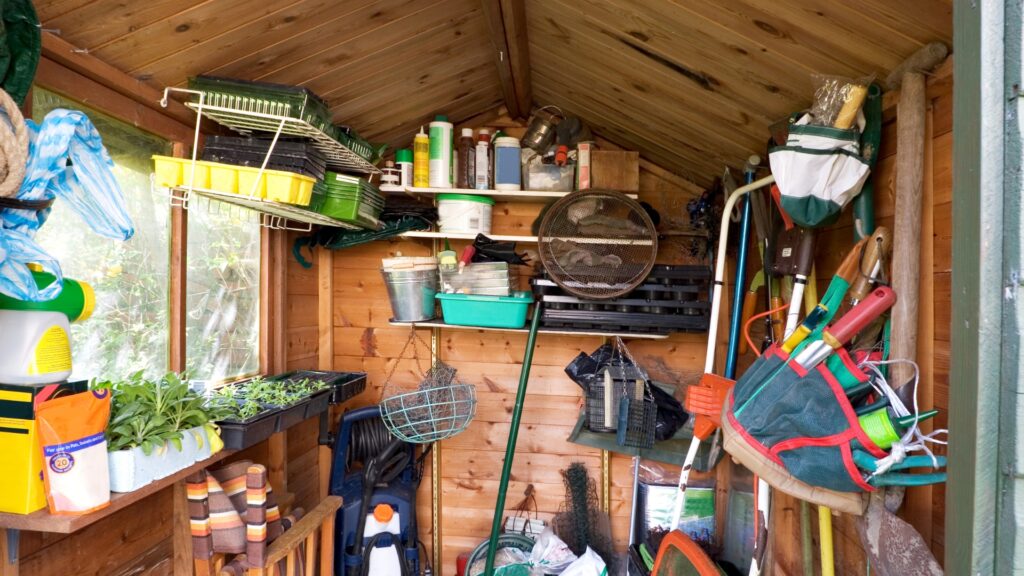
1. Evaluate Your Needs and Purpose
Before you start browsing for shed sizes, take a moment to assess your needs and the intended purpose of your shed. Are you looking to store garden tools, lawnmowers, and bicycles? Or do you have grander plans like a home office, a playroom, or a cozy she-shed? Understanding your purpose will help you determine the size you require.
Storage Needs: If your primary goal is storage, consider the types of items you’ll store in your shed. A small shed of around 6×4 feet can accommodate garden tools and equipment. However, for larger items like lawnmowers and bicycles, you may need a medium-sized shed, such as 8×10 feet.
Multi-Purpose Usage: If you have diverse needs, opt for a larger shed. This will allow you to store your tools and equipment and still have space for a workshop or hobby room.
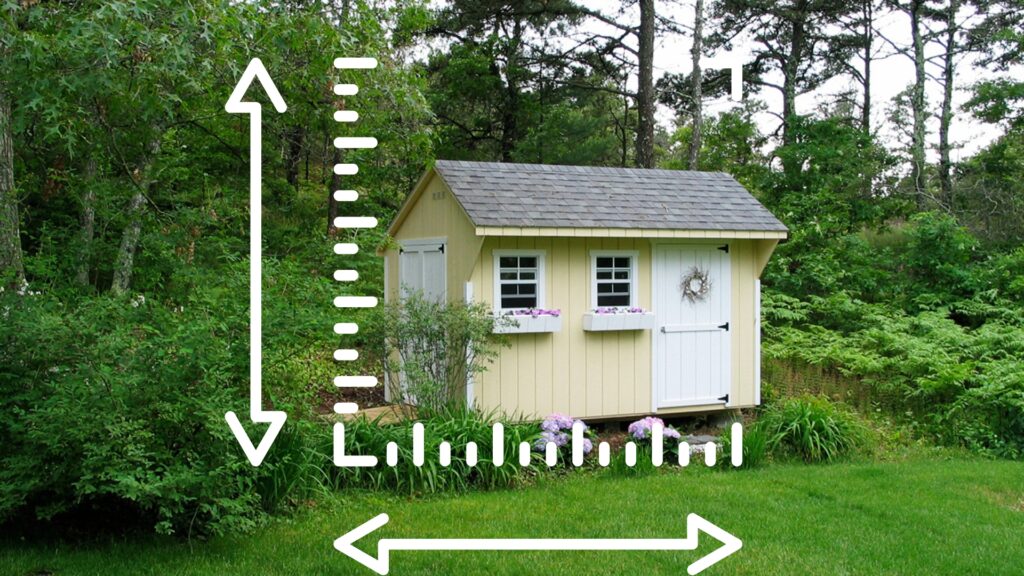
2. Measure Your Available Space
Take accurate measurements of the area where you plan to install your shed. Consider not only the width and length but also the available height. Pay attention to obstacles like trees, fences, and buildings. These measurements will be crucial in selecting a shed size that fits perfectly within your designated space.
Width and Length: Measure the available space, considering not just the footprint of the shed but also room for pathways around it. A common mistake is underestimating the importance of these pathways for accessing your shed conveniently.
Height: The height of your shed is essential. Ensure that it provides enough headroom to move around comfortably and store tall items without the risk of damaging them.
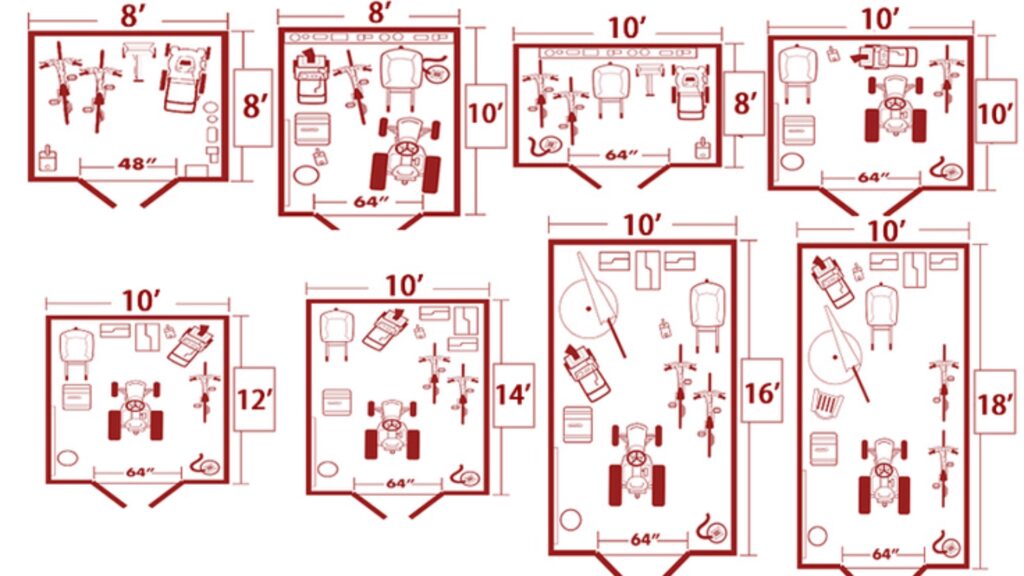
3. Standard Shed Sizes
Sheds come in a wide range of sizes, but there are some standard dimensions that you can consider:
Small Sheds (6×4 feet to 8×6 feet): Perfect for basic storage needs, such as gardening tools and small equipment. Small sheds can also serve as a cozy space for relaxation or as a garden focal point.
Medium Sheds (8×10 feet to 10×12 feet): Suitable for medium-sized storage or as a small workshop. These sizes are versatile, making them popular choices for many homeowners.
Large Sheds (12×16 feet to 16×20 feet): Ideal for larger storage needs, a home office, or a hobby room. Large sheds offer ample space for customization and can serve multiple purposes.
Custom Sheds: If your needs don’t fit within standard dimensions, consider custom-built sheds to get the perfect size and layout for your requirements. Custom sheds are designed to suit your specific space, functional, and aesthetic requirements.
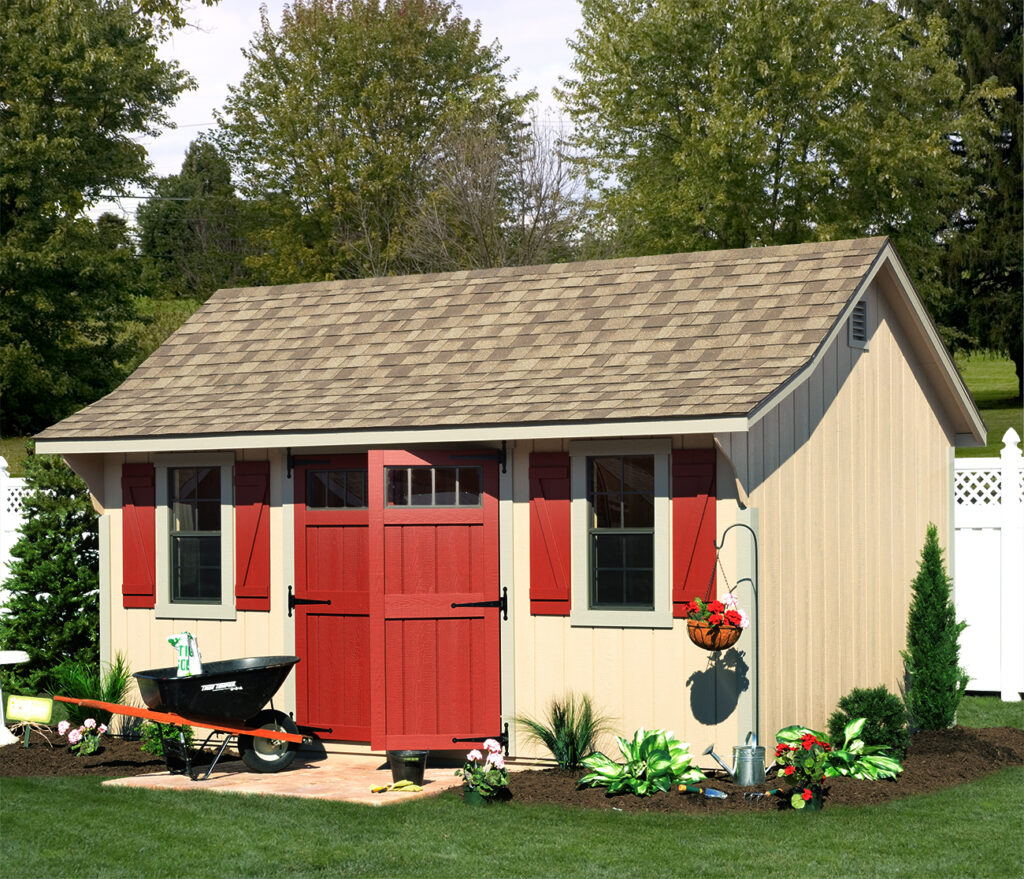
4. Consider Future Needs
Think about your future needs when selecting a shed size. While you may need storage space for your lawnmower and gardening tools now, your requirements may change over time. A larger shed or one with flexible usage can accommodate your evolving needs.
Planning for Growth: Consider what your storage and functional needs might be in the coming years. If your family is growing, or your hobbies and interests are evolving, it’s wise to invest in a shed that can adapt to your changing requirements.
Multi-Purpose Sheds: Larger sheds or custom designs can be versatile spaces. They can start as storage solutions and, in the future, transform into a home office, a craft room, a workout space, or even a guest cottage.
5. Local Regulations and Permits
Check your local regulations and building codes. Some areas may have restrictions on the size of outdoor structures. Ensure you comply with these rules to avoid any legal issues down the road. These regulations might impact not only the size but also the design, location, and even the materials used for your shed.
Zoning Restrictions: Zoning laws can limit the size and location of your shed. Ensure that your shed complies with your local zoning regulations, which are designed to maintain the aesthetics, safety, and functionality of your neighborhood.
Building Permits: Some areas require building permits for structures of a certain size. Before you build, consult your local authorities to determine whether you need a permit. Non-compliance can result in fines and the removal of your shed.
Here is a link for shed permit requirements in Lancaster, PA
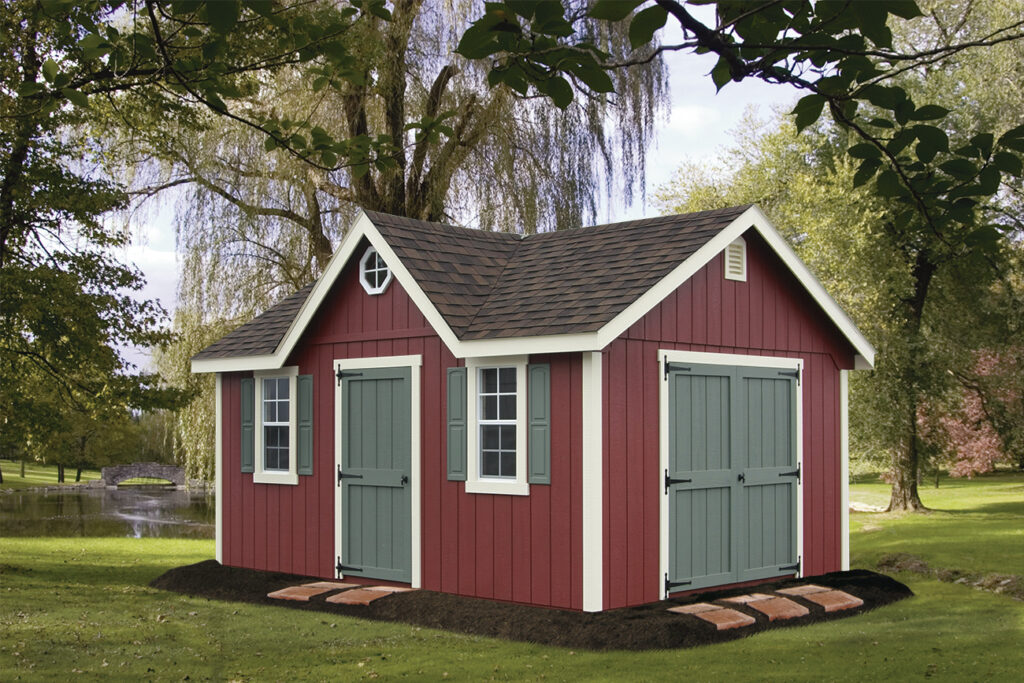
6. Door and Window Placement
Consider the placement of doors and windows when choosing your shed size. Adequate door width and height are essential for easy access. Windows can provide natural light and ventilation but also affect wall space for storage.
Door Placement: The location of the door is crucial for easy access and convenience. It’s recommended to have the door on the side that’s most accessible from your home or the area where you’ll primarily use the shed.
Window Placement: Windows offers light and ventilation, but they also reduce wall space for storage. If you plan on using your shed for primarily functional purposes like storage, consider the balance between windows and wall space.

7. Budget Considerations
Remember that larger sheds often come with a higher price tag, both in terms of the initial purchase and ongoing maintenance. Be sure to factor in your budget constraints when determining the shed size.
Initial Cost: The cost of a shed is directly proportional to its size. Larger sheds require more materials, labor, and time for construction. Carefully evaluate your budget to determine how much you can comfortably spend on your shed.
Maintenance Costs: Keep in mind that larger sheds will have higher maintenance costs. You’ll need more paint, roofing materials, and potentially more repairs over the years. Ensure your budget accounts for these ongoing expenses.
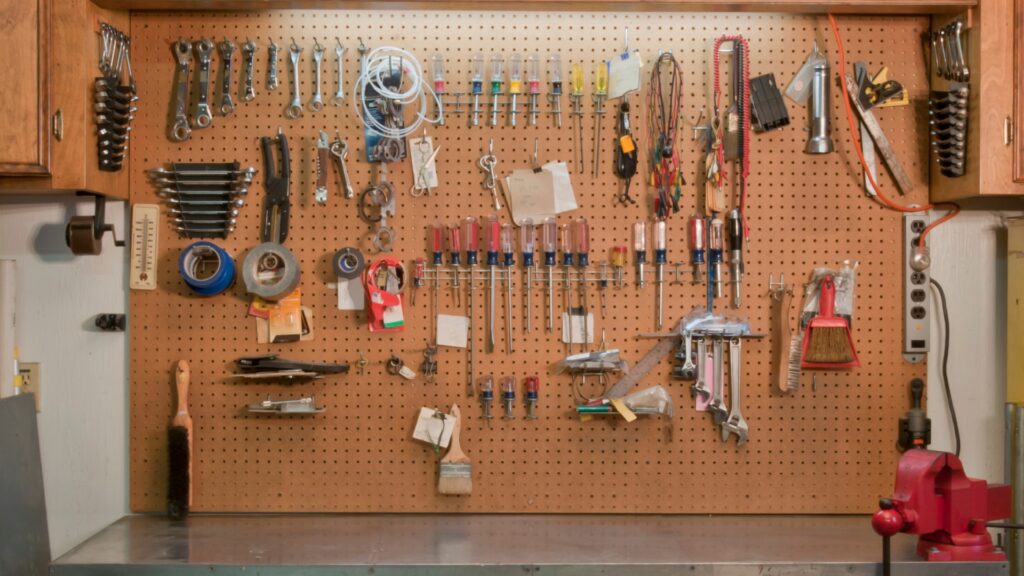
8. Interior Organization
Once you’ve chosen the right shed size, plan how to organize the interior effectively. Shelves, hooks, and pegboards can maximize storage capacity and keep your shed tidy and functional.
Storage Solutions: Consider the types of items you’ll store in your shed and invest in appropriate storage solutions. Shelving units, wall hooks, pegboards, and overhead storage systems can help maximize space.
Organization Tips: Use clear storage containers to see what’s inside, label boxes for easy identification, and keep frequently used items accessible. This organization will prevent clutter and make the most of your shed space.
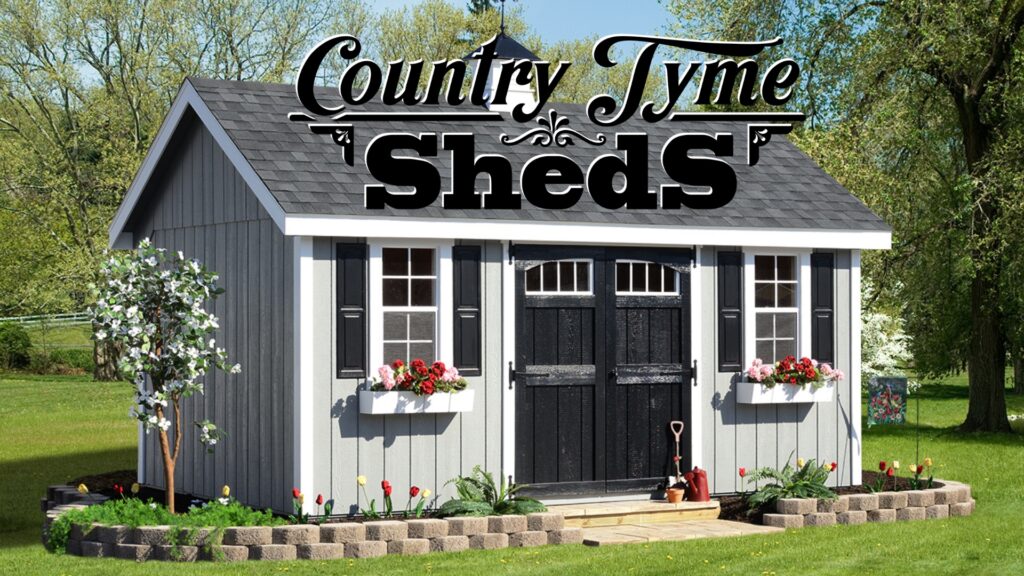
9. Seek Professional Guidance
If you’re unsure about the ideal shed size for your needs or have unique requirements, consult with our sales team by contacting us. They can provide expert advice and design a shed that perfectly matches your specifications.
Consulting with Experts: Our sales team has extensive experience in creating functional and aesthetically pleasing outdoor structures. They can help you make informed decisions, from selecting the right size to choosing materials and finishes that suit your style.
Custom Shed Builders: If you’re looking for a unique, custom shed, working with experienced builders is invaluable. We can design a shed that seamlessly integrates with your landscape and fulfills your vision. Check out our shed gallery for some ideas.
10. Enjoy Your Shed
Once your shed is in place, organized, and ready to use, you can enjoy the convenience and versatility it offers. Whether you’re gardening, pursuing hobbies, or just need extra storage, your well-chosen shed size will make your outdoor space more functional and enjoyable.
Gardening: With a well-organized shed, you can keep your gardening tools, pots, and supplies within easy reach. This makes tending to your garden a breeze and encourages you to spend more time outdoors.
Hobbies and Workshops: Larger sheds or custom-designed ones can serve as creative spaces for hobbies or workshops. Whether you’re into woodworking, painting, or crafting, your shed can become your sanctuary.
Relaxation: Smaller sheds can provide a cozy retreat in your garden. Add comfortable seating and some decorative touches, and your shed can be your personal sanctuary for reading, meditation, or enjoying a cup of tea.
Increased Property Value: A well-maintained and thoughtfully designed shed can add to your property’s value. If you ever decide to sell, your shed can be a selling point for potential buyers.
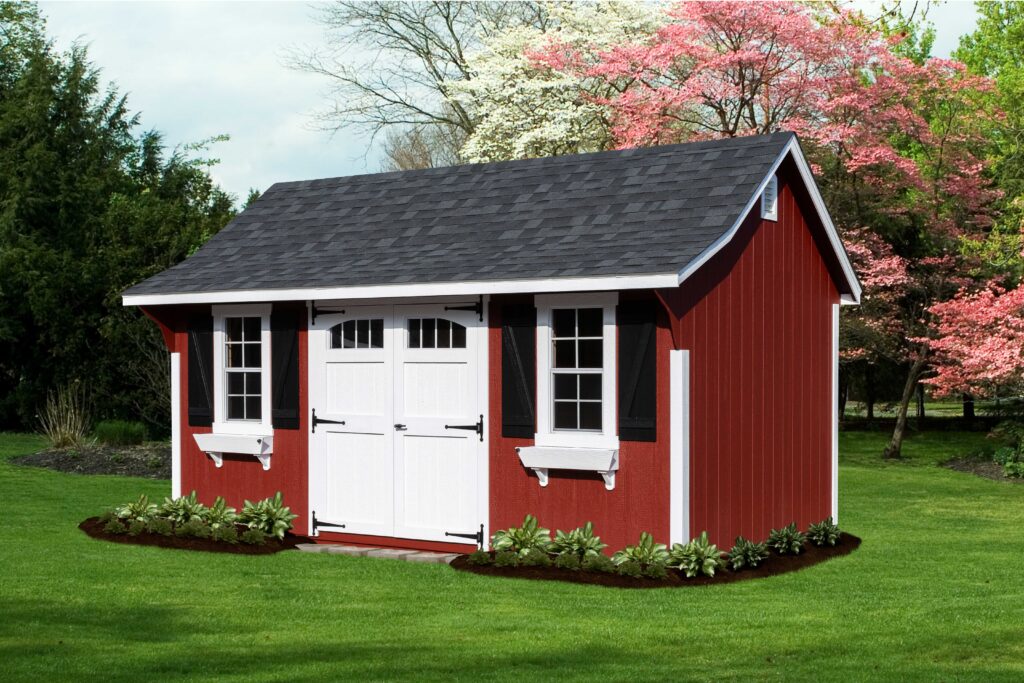
In conclusion, selecting the right shed size is a crucial step in creating an outdoor space that meets your needs and enhances your property’s functionality. By carefully evaluating your requirements, available space, and budget, you can make an informed decision and enjoy the benefits of a perfectly sized shed for years to come. Whether you use your shed for storage, as a workspace, or as a personal haven, the right shed size is the key to maximizing your outdoor space and property investment.
